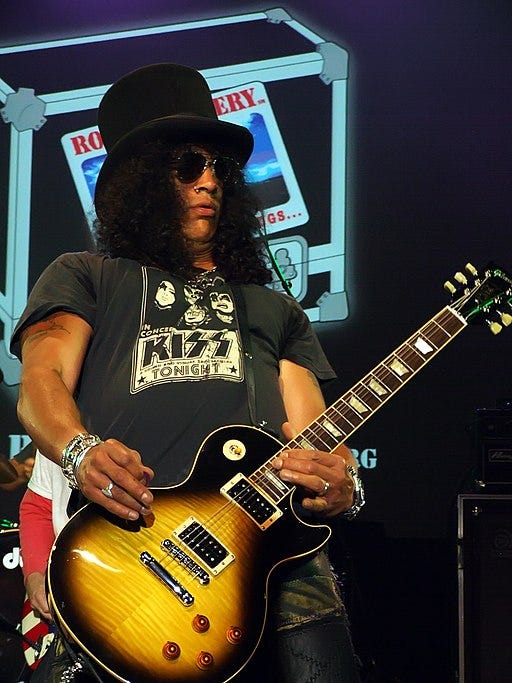Member-only story
Slash’s Favorite Gibson Isn’t Real — but It’s Still Awesome
Not a Medium subscriber? Read this article for free here.
Slash. The iconic guitarist of Guns N’ Roses. Inventor of perhaps the best guitar lick of all time: the intro to Sweet Child o’ Mine.
His image is as unmistakable as his playing: long, curly hair, top hat, and shades, with a Gibson slung across his shoulder.

But what if I told you his main guitar wasn’t a Gibson at all, but a copy?
The early days of GNR
Before GNR was a household name, they were just another Southern California band looking to make it big.
The band at that time, like many up-and-coming bands, had almost no money. And what money they did have they spent on parties, drugs and alcohol (which should come as a surprise to exactly no one).
When they finally scored a record deal in the mid-1980s, they were still in the same financial boat — the one with the giant hole in the bottom.
As they went into the studio to record what would become the Appetite for Destruction album, Slash ran into an issue. His meager arsenal of guitars at the time (he has over 100 of them now) was down to two Jackson guitars, a B.C. Rich Warlock, a Firebird, and a one-off arch-top, Strat-style guitar. He had sold the rest of his guitars because he needed the money.
Appetite for Destruction
Apparently he failed to consider how his remaining guitars would sound in the studio, because, in his words, “They all sounded horrible.”
Not knowing what to do, Slash turned to his manager, Alan Niven. Alan scoured the guitar scene in L.A. and came back the night before Slash was to record with a Gibson Les Paul. At least, that’s what it looked like. Slash fell in love with the instrument, recorded the album, and the rest was history.
A guitar built for no one
But that guitar did not originate in Kalamazoo, Michigan. It was instead a replica Les Paul built by a local luthier named Kris Derrig. Derrig was a luthier who usually built custom orders for individuals, but he just happened to make a 1959 Les Paul clone without a buyer lined up in 1984–85.
